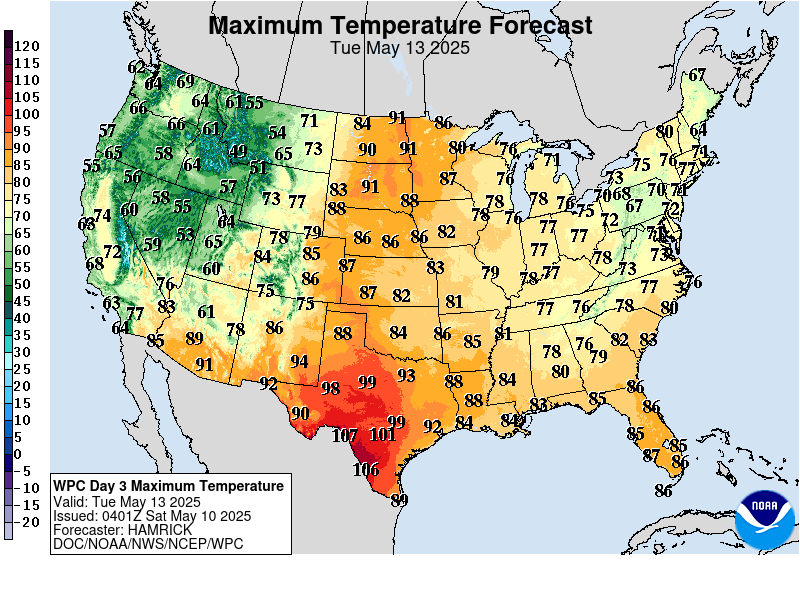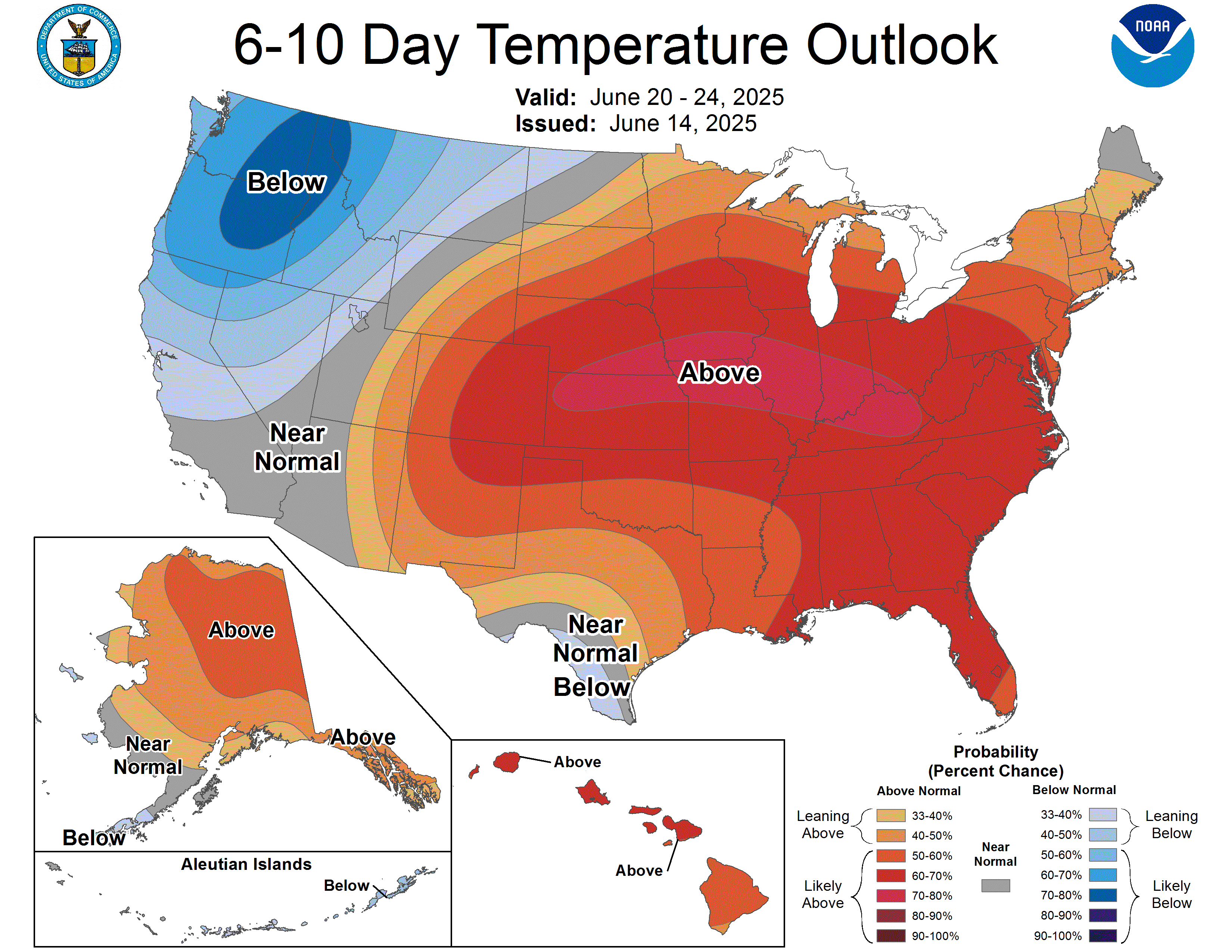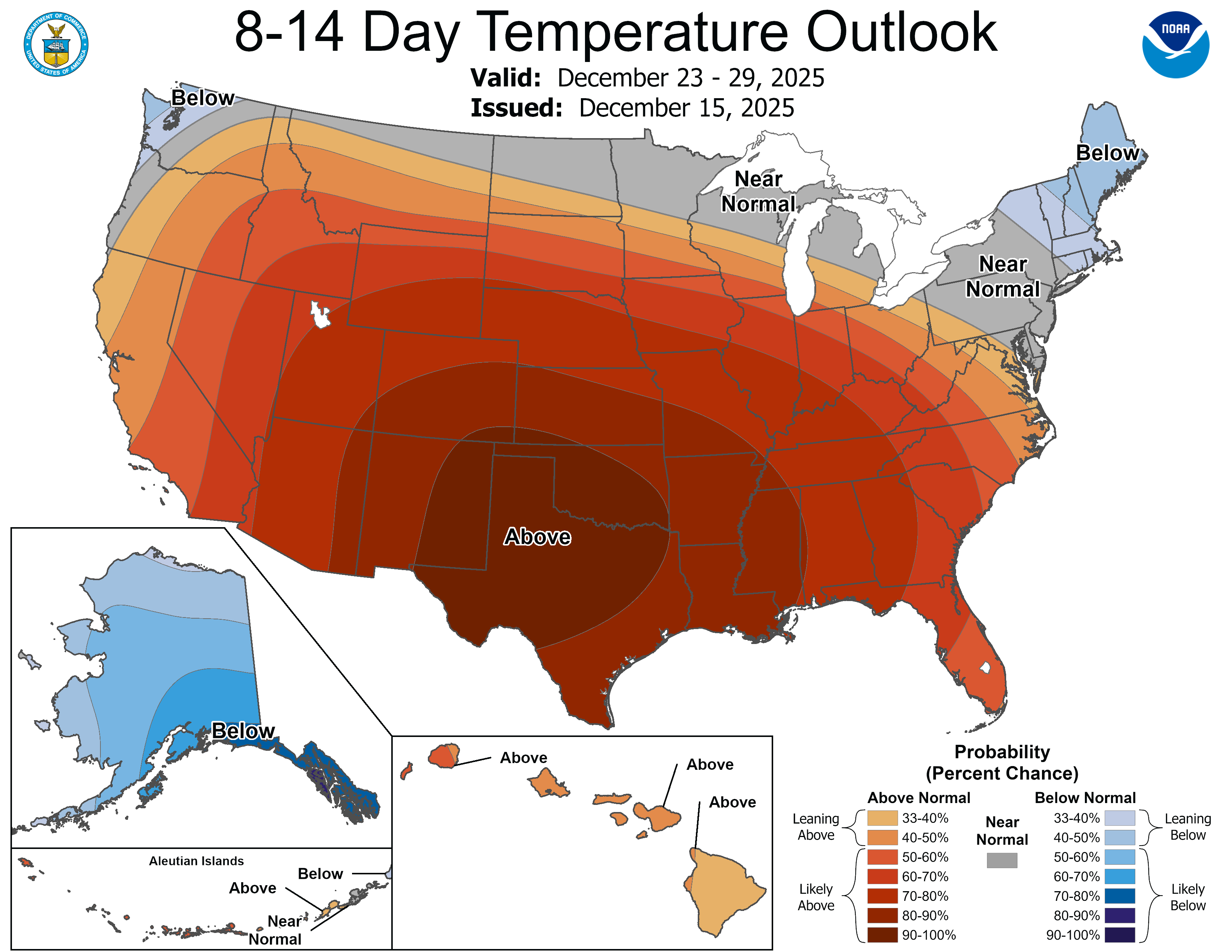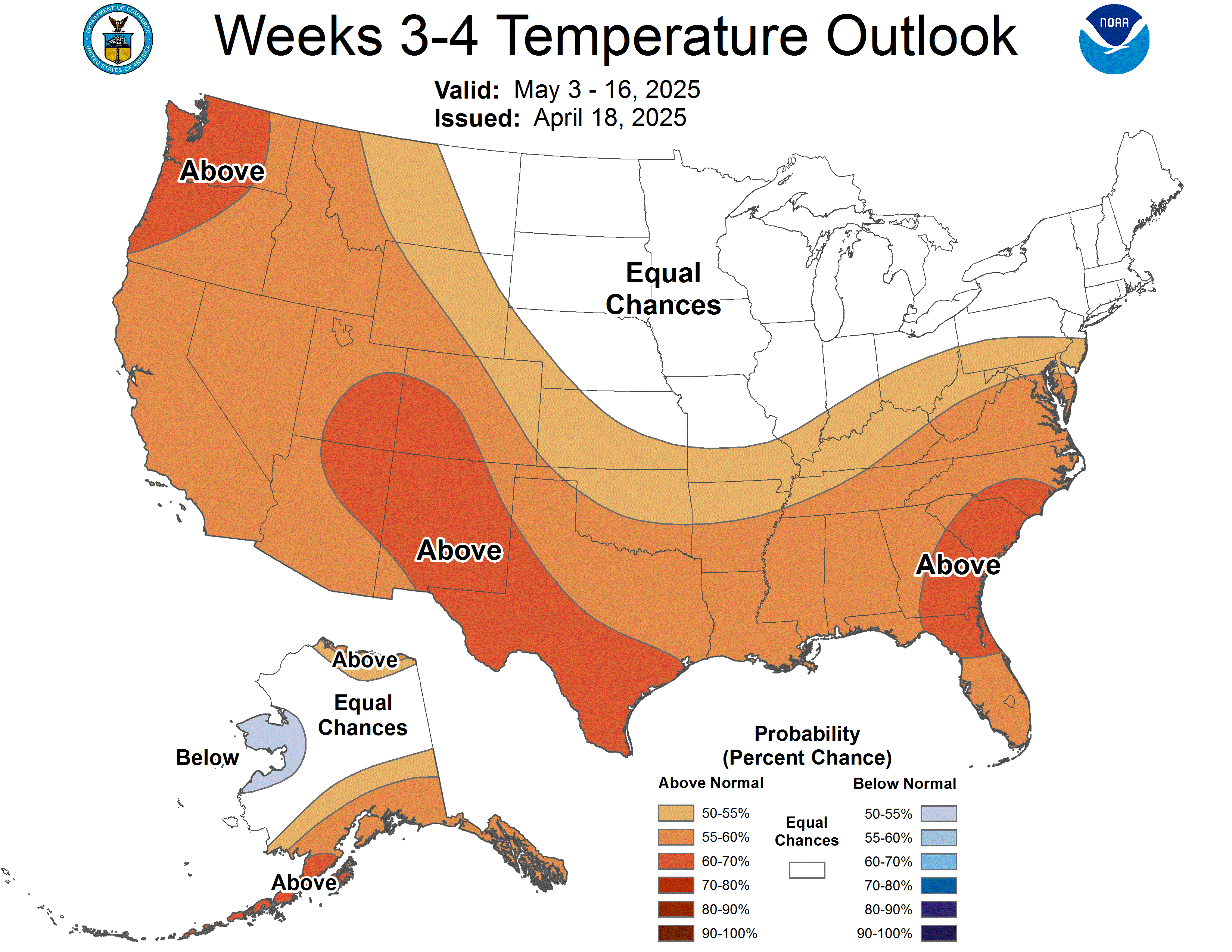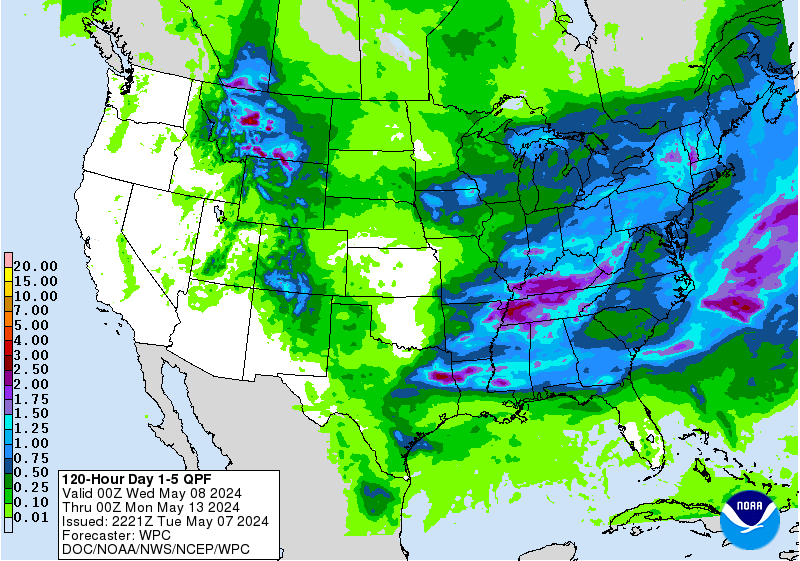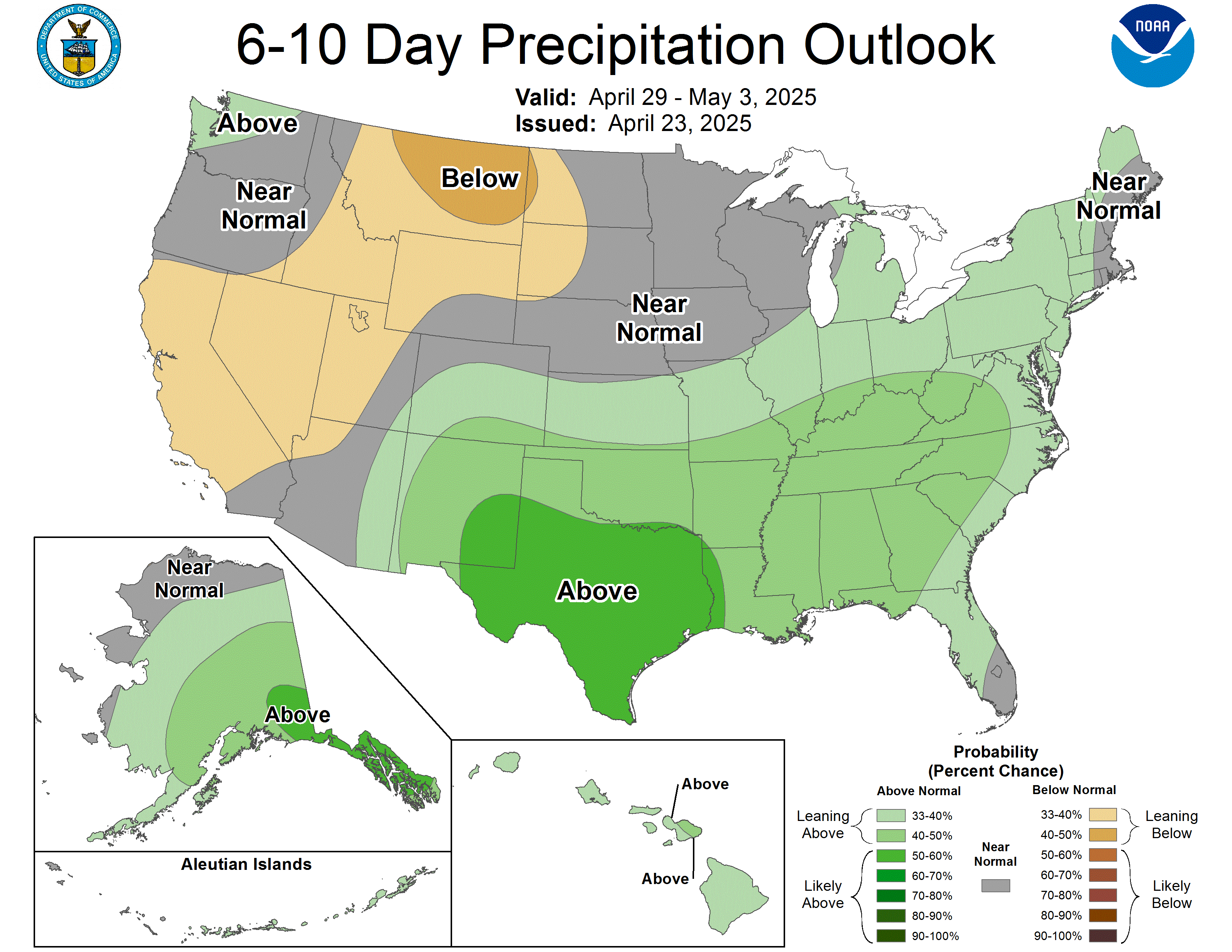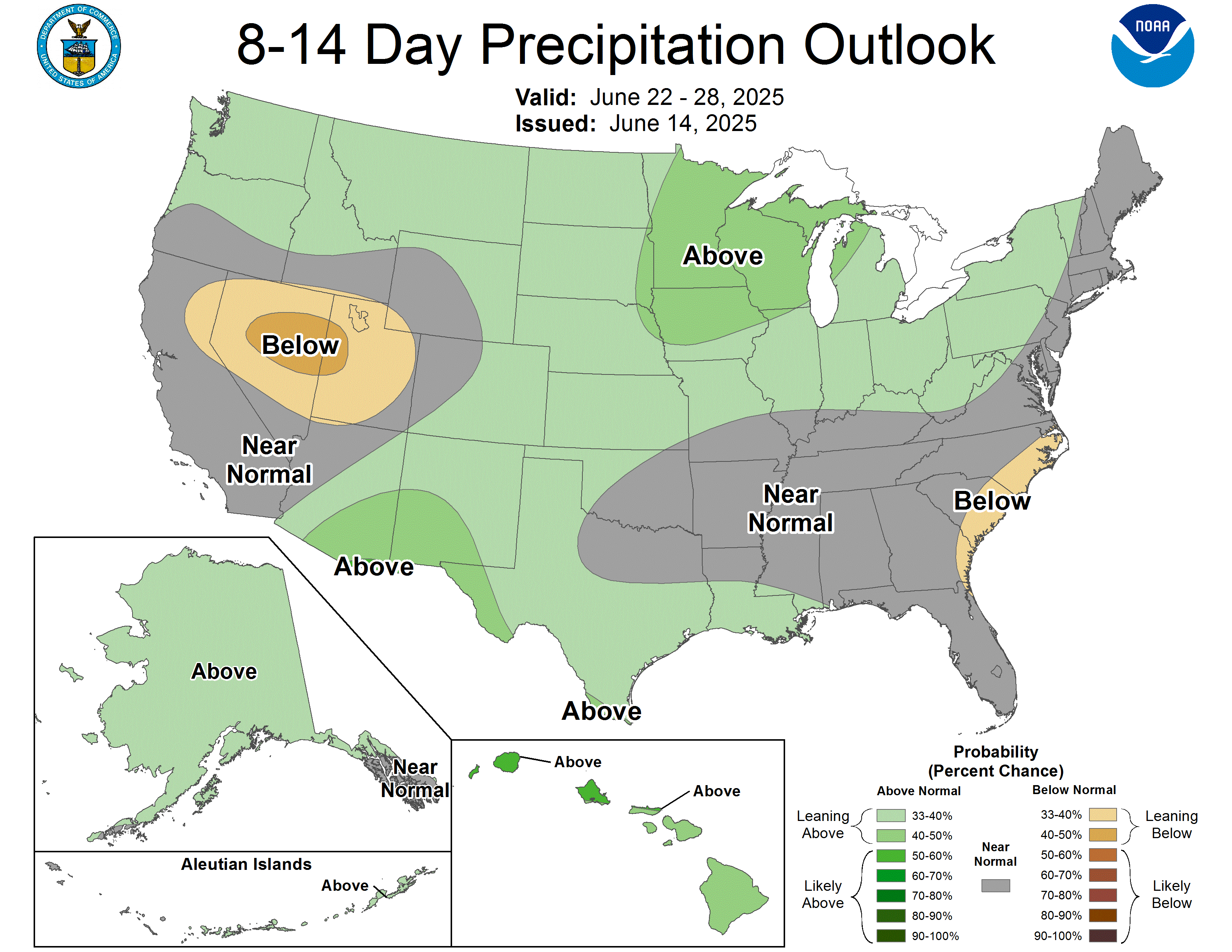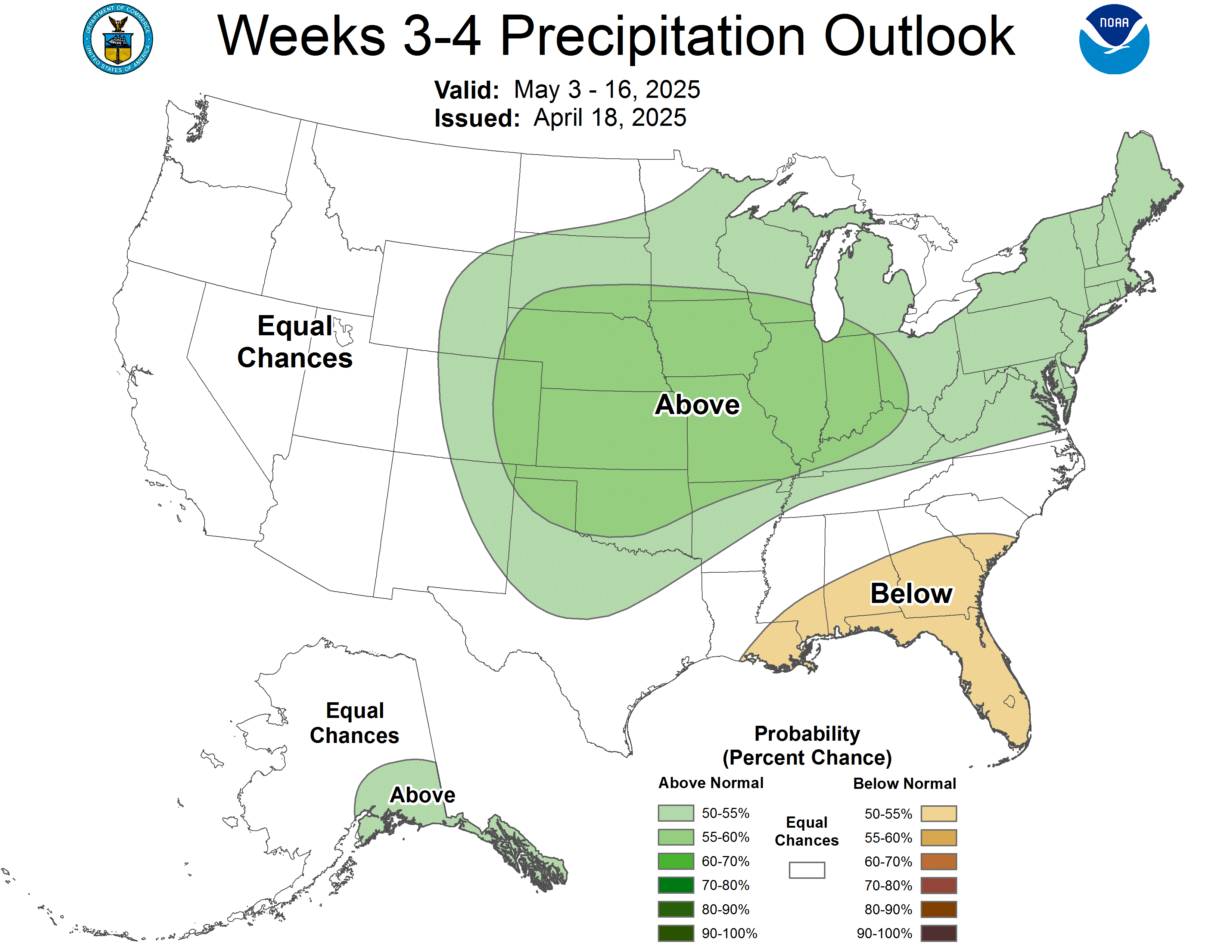Written by Sig Silber
Updated by the Author at 6:30 pm October 2, 2020 to reflect the new Week 3 – 4 Forecast that indicates that the full-month forecast is not likely to be correct for the Southeast and that area will for the month be warmer than shown in the full month forecast.
At the end of every month, NOAA issues an update to their Early Outlook for the following month which was issued as usual on the Third Thursday of September. Today, thirteen days later, NOAA has issued their Updated Outlook for October. These changes appear to be related to the development of La Nina which NOAA now fully acknowledges. October tends to be dry and the changes to the forecast are in that direction and also less warm. We also have the new Drought Forecast for October.

Some housekeeping: On September 18, 2020, we published Part I of our analysis of the NOAA and JAMSTEC Three- to Four- Season Outlook and that can be accessed here. In that report, the October 2020 Early Outlook was issued. This article presents the NOAA update of their Early temperature and precipitation Outlook for October and the most recent Drought Forecast update for the month of October.
Please share this article – Go to the very top of the page, right-hand side for social media buttons. Also, feel free to send this article to anyone you feel will benefit from it. You can find the latest version of all our weather articles by consulting the Directory by clicking here and then clicking on the latest version of the article which is of interest to you.
Now, we will compare the NOAA Early Outlook for October 2020 with the newly issued update.
Early Outlook Temperature

Updated Temperature Outlook

Early Outlook Precipitation

Updated Precipitation

Here is the discussion released with the forecast.
30-DAY OUTLOOK DISCUSSION FOR OCTOBER 2020
The updated October 2020 temperature and precipitation outlooks are adjusted from the mid-October outlook by utilizing short-, medium- and extended-range dynamical model guidance in concert with ongoing antecedent conditions, background La Nina and MJO conditions and the most recent subseasonal and monthly integrated dynamical model guidance.
The updated temperature outlook has been adjusted to increase the coverage and considerably increase the probabilities for above-normal temperatures for much of the western half of the CONUS and parts of Alaska. Favored above-normal monthly mean temperatures remain forecast for New England, the northern Great Lakes and the Florida Peninsula. Forecast support in these areas are consistent and strong signals from dynamical model guidance across multiple time scales and to a lesser extent surface states such as close proximity to above-normal ocean / lake surface temperatures and dry surface moisture states. Model guidance supports considerable ridging to remain in place across western North America with substantial positive 500-hPa height departures.
The main difference in the updated outlook for temperature is where troughing downstream of western CONUS ridging is to be quite strong for approximately the first week or so of October supporting the passage of strong cold fronts across the eastern and southern CONUS supplying ample below-normal temperatures primarily for the lower Ohio Valley, Tennessee Valley and parts of the Southeast and Gulf Coast. The dilemma for the forecast in these areas is that will this cool signal (below-normal temperatures) remain by the end of the month, when statistical and dynamical model guidance supports more mild, moderate temperatures for much of the CONUS during the remaining portion of October as a more zonal, positively anomalous 500-hPa height pattern evolves. The updated outlook does depict that below-normal October monthly mean temperatures are most likely for some of the above mentioned areas in the Southeast corner of the CONUS.
For precipitation, there are not too many changes from the mid-October outlook. The main difference is a substantial increase in coverage and probabilities for below-normal precipitation across the interior three-quarters of the CONUS. The significant precipitation expected at the very end of the month of September is currently forecast to shift off the eastern seaboard by the start of the forecast period. Even so, below-normal precipitation is forecast are more modest odds closer to the eastern seaboard and for New England as some troughing in the mean remains into early October in that area. The favored large-scale pattern in the mean during October is forecast to be a ridge-trough pattern stretching from the western to eastern CONUS which is dry pattern for much of CONUS as surface high pressure is likely to prevail more often than not.
Another change based on short- and medium-range forecast guidance is an increase in odds for above-normal precipitation for the Florida Peninsula as a stationary front and interaction with tropical moisture favors potentially high precipitation totals during the first several days of October.
Above-normal precipitation remains favored for the Pacific Northwest and areas in Alaska based on model guidance as well as it consistency with background La Nina conditions. The only change in Alaska is the removal of favored below-normal precipitation for the south-central coast of Alaska where lack of strong signals from dynamical model guidance across time scales tempers this typical La Nina response.
| September 17, 2020, Forecast for October | September 30, 2020, Forecast for October | |
| Temperature | ||
| Precipitation |
Visual Consistency Testing.
It is useful to see how the full-month forecast fits with the set of partial-month forecasts that we have. These will continue to update in this article. It is important to remember that with the partial-month forecasts, we generally have about 25 days of the subsequent month to look at when we do this at the end of the month as we are doing now. It depends on what day of the week the month ends. So this month, which ended on a Wednesday, we are missing a forecast that includes seven of the last eight days of the month. So we are not in great shape for the visual consistency testing this month but in decent shape. That has now changed with the release on October 2, of the week 3 – 4 forecast and the visual consistency testing suggests the full month Temperature Forecast is not on target relative to the Southeast.
First Temperature
And Precipitation
Here is the discussion that was released with the update of the Week 3-4 Forecast.
Week 3-4 Forecast Discussion Valid Sat Oct 17 2020-Fri Oct 30 2020
La Nina conditions are present, with below normal SSTs over the Central and East Pacific and enhanced easterly winds across the equatorial Pacific basin. The MJO remains active as well, with the enhanced phase now propagating across the Maritime Continent. Dynamical model MJO index forecasts do not show a robust MJO signal crossing the Pacific. Therefore, La Nina conditions will likely be the most impactful tropical forcing on the midlatitude circulation pattern during the week 3-4 period.
Dynamical model guidance for the week 3-4 period is relatively consistent with an evolution of the circulation predicted for week 2. Troughing along the Pacific Coast of Canada and the Northwest CONUS continues as either an amplified negative 500-hPa height anomaly, as in the ECMWF, or as a weakness in positive 500-hPa height anomalies extending towards the Northwest CONUS, as in the JMA and CFS ensemble means. Ridging persists over the CONUS from week 2 into week 3-4, with the ECMWF predicting a more amplified positive 500-hPa height anomaly centered over the CONUS, compared to the CFS and JMA forecasts that center the positive 500-hPa height anomaly over eastern Canada. The Subseasonal Experiment or SubX MME consensus of operational and experimental models forecasts a circulation pattern that is more in phase with the ECMWF than the CFS or JMA, although with weaker troughing over the Gulf of Alaska than the ECMWF. The ECMWF was given greater weight in the manual 500-hPa height blend than the CFS and JMA dynamical models and the MLR height forecast, based on the state of ENSO and MJO.
The Week 3-4 Outlook for temperature was based primarily on the blend of dynamical model forecasts with greater weight given to ECMWF forecasts, consideration of the SubX MME consensus, and less weight given to the MLR of MJO and ENSO impacts. The forecast calls for enhanced probabilities for above normal temperatures across most of the forecast domain, including the CONUS and Alaska. Predicted troughing over the south coast of Alaska and anomalous northerly flow over southwestern areas of the mainland of Alaska leads to a forecast of equal chances of above and below normal temperatures for these regions, where various temperature tools show greater uncertainty. Above normal temperatures are likely for northern areas of Alaska, where decadal trends are large, and for the Alaska Panhandle, under anomalous southerly flow. Above normal temperatures are likely for most of the CONUS, under positive 500-hPa height anomalies. Higher probabilities exceeding 70 percent for above normal temperatures are predicted for the Southwest, eastern areas of the Northern Plains, and the western Great Lakes region. Equal chances of above and below normal temperatures is predicted over much of the Southeast CONUS, where greater uncertainty is indicated in the temperature tools, and the ECMWF in particular predicting some chance of below normal temperatures. The SubX MME indicates a high probability exceeding 80 percent for above normal temperatures for all of Hawaii, with above average SSTs in the vicinity.
The Week 3-4 Outlook for precipitation was also based primarily on the blend of dynamical model forecasts with greater weight given to ECMWF forecasts, consideration of the SubX MME consensus, and less weight given to the MLR of MJO and ENSO impacts, that primarily resembles a La Nina pattern with likely above median precipitation across much of the Northern CONUS and likely below normal precipitation across much of the Southern CONUS. Virtually all dynamical model guidance for week 3-4 indicates enhanced probabilities for below median precipitation across most of the CONUS, under the predicted ridge. Probabilities for above median precipitation are increased for parts of western Washington and northwestern Oregon ahead of potential troughing off the Pacific Coast. Enhanced probabilities for above median precipitation extend northward into most of the Alaska Panhandle ahead of the predicted trough. Above normal precipitation is also likely for parts of the southern Florida Peninsula, with a potential for a tropical system to move northward from an active western Caribbean during the period. Equal chances of above and below median extends along the Atlantic Coast of the Southeast and for Southwestern and Southeastern Alaska, where there is uncertainty among dynamical model precipitation tools. The SubX MME consensus forecast predicts likely below median precipitation for the southeastern Hawaiian Islands, which is consistent with La Nina impacts for this season, and equal chances of above and below median precipitation for the northwestern islands.
Sometimes it is useful to compare the three-month outlook to the forecast for the first of the three months. It shows how much the pattern changes over the three-month period.

One can mentally subtract the First-Month Outlook from the Three-month Outlook and create the Outlook for the last two months in the three-month period.
And with respect to drought, this was also issued on August 31, 2020
Latest Monthly Assessment – La Niña conditions are present during September, and are likely (~75% chance) to continue through the Northern Hemisphere winter. The forecaster consensus favors a borderline moderate event during the peak November-January season, then gradual weakening in early 2021 with the possibility of ENSO neutral conditions by the March-May period.
During September, drought coverage and intensity continued to expand across the CONUS, mainly in the West and New England. The near failure of the Southwest monsoon season, subnormal precipitation across most northern sections of the CONUS, and temperatures averaging 2 to 6 degF above normal west of the Rockies resulted in expansion and intensification of D1-D4 from 66.93% on August 25 to 73.37% on Sep. 22 in the Western region. D3-D4 drought also ramped up in the West, going from 16.88% to 29.21% for the same 4-week period. The dryness and heat also sparked a near-record amount of large wild fires across the West, taking dozens of lives, charring millions of acres of forests, and destroying numerous homes and buildings – with October yet to come. Unfortunately, October is usually one of the most active months for wildfire activity, especially in California, when the Santa Ana winds tend to kick up. Subnormal precipitation also fell on the northern and central Plains, expanding D0-D2 there. Nearly all of the Northeast saw less than half of normal precipitation from Aug. 29-Sep. 28, with many areas recording <25% which led to a 1-2 category deterioration during the past 4 weeks. However, a strong system slowly passed through the East Coast on Sep. 29-30, bringing badly-needed rains (1-4 inches) to much of the Northeast, but any improvements to the USDM won’t be depicted until next week (Oct. 6) as the rains fell after the 12UTC Tuesday USDM cutoff. The southeastern quarter of the Nation remained nearly drought free due to several September tropical systems (Sally, Beta) and lingering short- and long-term wetness. Abnormal dryness and drought also intensified and spread across Hawaii, Alaska had a few pockets of D0 and D1 on Kodiak Island and in the northwest, and Puerto Rico was drought-free.
With the ongoing and expected to continue La Niña, the seasonal (OND and into winter) forecasts tilt toward subnormal precipitation and above-normal temperatures across the southern tier of States, with above-normal precipitation in the Northwest. For October (climatologically one of the driest months of the year), the ongoing La Niña, many areas currently in drought, and the short-term (QPF), extended-range (ERFs), Weeks3-4, and updated 1-month long-lead forecasts (LLFs) – which are in agreement for large areas of subnormal precipitation and above normal temperatures – favor persistence, deterioration, or development of drought in much of the West, Plains, and Midwest. This also includes Hawaii (persistence) where the expected La Niña impacts for above-normal rainfall typically occurs later in the winter. This is unfortunate for the farmland and pastures of the Plains and Midwest as autumn’s lower temperatures and little or no evapotranspiration allows for excellent soil moisture recharge – when decent rains occur – before the ground freezes. In contrast, some areas have recently (e.g. Northeast) or are expecting to see above-normal precipitation during October, and as a result, some improvement is expected in the Pacific Northwest (as their wet season gets underway), the Northeast (Sep. 29-30 rains and more chances for rain in early October), and Alaska (recent rains and enhanced ERF chances). The wet Southeast should remain drought-free through the end of October even though the forecasts expect subnormal precipitation (except in Florida).
Looking back on September to relate the forecast for October to the actuals in September
First September Temperature (29 out of 30 days).
And then September Precipitation (29 out of 30 days).
We then show the new forecast and the prior month actuals (less one day) side by side.
| Prior Month (usually missing one day) | Forecast for current Month | |
| Temperature | ||
| Precipitation |
Conclusion
The purpose of this article was to present the updated Outlook for October 2020 and compare it with the Early Outlook. It is not to critique the updated Outlook for October based on our opinions but we point out possible inconsistencies if we find them. We have assessed the extent to which the monthly outlook seems to fit with the other forecasts provided by NOAA. In reality, all forecasts are obsolete when issued as the situation changes day by day or six hours by six hours i.e. each new model run. In our other articles, we continually examine the current forecasts from NOAA including Day 1- 5, 6-10, 8-14, and Week 3 and 4. So we are continually looking at approximately 25 days into the future.
On October 8, 2020, IRI/CBC will issue their ENSO forecast and we will present that and critique it. What they present on October 8 is not likely to impact the forecasts for the next three months but may shed some light on the second half of Winter and Spring. It is an ongoing process and we attempt to provide our readers with the best current assessment of the next approximately 25 days (except when we cover the Four-Season Analysis or medium-frequency cycles such as ENSO in which cases we are looking further out than 25 days), so our analysis is pretty much ongoing. We also publish a “LIVE” Weather Article which updates in real-time to reflect NOAA Weather Headlines and for those interested provides detailed information down to current warnings in place. All of our reports including past versions of these reports can be located via the Directory/Archive which can be accessed here.



